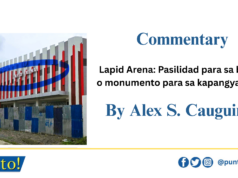In the early days of the pandemic, business leaders quickly realized the digital maturity of their IT infrastructure was a key indicator of success when it came to business continuity. The ability for businesses to manage infrastructure, tools and processes remotely has become a business imperative. As high-growth companies are turning to hybrid work arrangements, employees are not the only ones moving away from or staying out of traditional population centers. Customers are migrating out of some major cities, requiring companies to leverage the cloud to deliver apps and services directly to end-users.
All these create an imperative for business leaders to evaluate their infrastructure portfolio to ensure they are prepared to support the vastly changed and changing requirements of the next normal workforce.
“There are several questions that business leaders must ask as they prepare for a hybrid world,” explained Tony Kang, Business Vice-President, Secure Power, Schneider Electric Philippines.
“Are your edge sites physically secure? Are you using a cloud-based data center infrastructure management software to manage and monitor your data centers and edge sites? Have you evaluated the energy efficiency of your new infrastructure? Can you monitor data center sites remotely for physical threats and to address alarms? Can you increase support, resiliency and reduce operating expense by working with a partner to manage IT?”
With CIOs placing big bets on a hybrid strategy, IT departments need to evaluate, manage, and optimize the entire infrastructure portfolio, inclusive of the central data center, individual edge locations, and their connectivity. Schneider Electric continues to lead the way in meeting the challenges of managing hybrid IT infrastructure that needs to be resilient, secure, and sustainable.
Schneider Electric provides discussion starters on how business leaders can start preparing for a hybrid world.
Securing edge sites. Kang notes that there are many factors to consider when physically securing edge sites. “Business leaders have multiple considerations, from location selection to authenticated access of personnel into the data center, which should be monitored and audited vigorously,” he explained.
Utilizing cloud-based data center infrastructure management software. Kang shares that utilizing a cloud-based data center infrastructure helps manage and monitor data centers and edge sites. “Cloud technologies allow for easy implementation, scalability, analytics and maintenance, as well as insights and event prediction,” he said. “Moreover, it can utilize mobile and web technologies and integrate third-party platforms using open APIs. Other benefits include an optimized user experience for simplicity in managing distributed sites, as well as compliance tools to identify and eliminate risks.”
Energy efficiency evaluation. Sustainability is a key priority of the Philippine government, with the scaling-up of green infrastructure being crucial for the country to meet its climate commitments—and hyperscalers are taking notice. “The hyperscaler segment of the industry are the large global companies that offer cloud and networking technologies at scale,” explained Kang. “They are looking at the green energy market in the country, as well as the Philippines’ data privacy regulatory framework.”
Remote monitoring of data centers. Remote monitoring can increase resiliency and maintenance capabilities. “It’s not always possible for companies to have staff at every edge processing station or data center,” Kang said. “These locations must still be monitored and maintained, despite their locations or possible staffing challenges. Remote monitoring can help address physical threats and spot potential alarms.”
Partnerships for enhanced support, resiliency, and efficiency. “It may be in a company’s best interest to leave energy management and asset optimization to the experts. Service provider partners like Schneider Electric come equipped with solutions specifically designed to keep infrastructure running, so companies can focus on their core competencies,” Kang explained.
All these are initial questions and directions for business leaders to consider as the Philippines moves to a hybrid world. More than ever, companies need to evaluate their existing IT infrastructure to make sure that these are responsive to the needs of the “next normal” in the work set-up.





